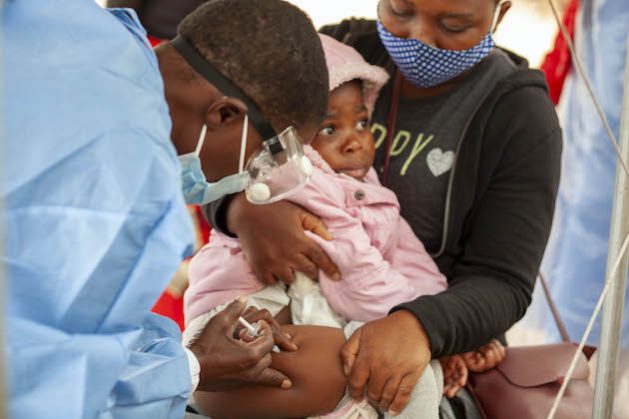NAIROBI/JOHANNESBURG, Apr 29 (IPS) – Across Africa, local manufacturing and pharmaceutical companies are responding to the urgent need for locally produced medical products and technologies despite the existing regulatory challenges. We can support manufacturing capacity by expediting the establishment and operationalisation of the African Medicines Agency (AMA).
In November 2021, after 15 countries signed and ratified the AMA treaty, the AMA became a specialised agency of the African Union (AU). To date, 19 countries — Algeria, Benin, Burkina Faso, Cameroon, Chad, Egypt, Gabon, Ghana, Guinea, Mali, Mauritius, Namibia, Niger, Rwanda, Seychelles, Sierra Leone, Tunisia, Uganda, and Zimbabwe — have ratified the treaty.
However, this number remains far short of the 55 AU member states and excludes some of the region’s power houses such as South Africa, Nigeria, Kenya, Ethiopia, and Senegal.
Over the next five years, Africa’s health care sector, especially local pharmaceutical production, will be a key economic driver for the region—predicted to be about two percent of the global pharmaceutical market in 2022.
Harmonising health product regulations will make Africa a more attractive market for the pharmaceutical sector, for both research and development, as well as introduction of innovations.
These harmonisation efforts will further improve trade in support of the African Continental Free Trade Area (AfCFTA), by deepening African integration and enabling the development of markets for health commodities and technologies? Of most importance, the agency will coordinate joint assessments and inspections for a select group of products, and coordinate capacity building.
The next two years will be critical in setting up the agency, including selecting a host country, appointing the director general, recruiting staff, and setting up offices for AMA. Countries that have not yet ratified will not have an input into these key decisions which will bolster the medicines regulatory environment in the region.
This has been a long journey. The agency is derived from the African Medicines Regulatory Harmonisation (AMRH) initiative launched in 2012, led by African Union Development Agency (AUDA-NEPAD) to address challenges faced in medicines regulation in Africa.
These challenges include weak legislative frameworks, duplicative and slow medicine registration processes, and subsequent prolonged approval decisions, limited technical capacity, and weak supply chain control. As COVID-19 has shown, these challenges pose both a public health and economic risk to the continent.
To improve the fragmented regulatory system for medical product registration in Africa, the vision is to gradually move from a country-focused approach, with 55 countries acting independently to a collaborative regional one, with five Regional Economic Communities supporting one Agency.
AMA will review regional policies and identify new sources of funding to enhance national capacity to regulate medicines, as well as try to simplify the complex requirements from regional and global level standards and guidelines.
Member states also need to be cognizant of the extensive operationalization process required to set up the agency’s administrative and technical workstreams. For instance, as part of the administrative workstream, they need to select a host country, appoint a Director General, recruit staff, set up office space, and register the treaty with the UN Secretary General.
We need to move swiftly to ensure the entire continent is on board. By now, every AU member state should have approved and ratified the AMA by signing, ratifying, and depositing its instruments at the AU commission.
Member states need to commit resources to co-finance the operations of the agency as top priority, building on the already existing commitment of more than €100 millionby the Bill & Melinda Gates Foundation and the European Union.
With the vision of preparing Africa to facilitate the production of 60 percent of vaccines needed on the continent by 2040, the establishment of AMA is a clarion call to countries and regulators. We must urgently put in place the tools needed to realise the optimal operationalisation of the Agency by the end of 2022.
We applaud the 19 member states that have ratified the AMA. We urge these states to be champions by promoting the benefits of the agency all over the continent to encourage and motivate the rest to come on board and ratify the Africa Medicines Agency.
Johnpaul Omollo is a Senior Advocacy and Policy Officer at PATH in Kenya. Follow him on Twitter @JPmcOmollo
Taonga Chilalika is a Senior Advocacy and Policy Associate at PATH in South Africa. Follow her on Twitter @TaongaChilalika.
© Inter Press Service (2022) — All Rights ReservedOriginal source: Inter Press Service
Check out our Latest News and Follow us at Facebook
Original Source

